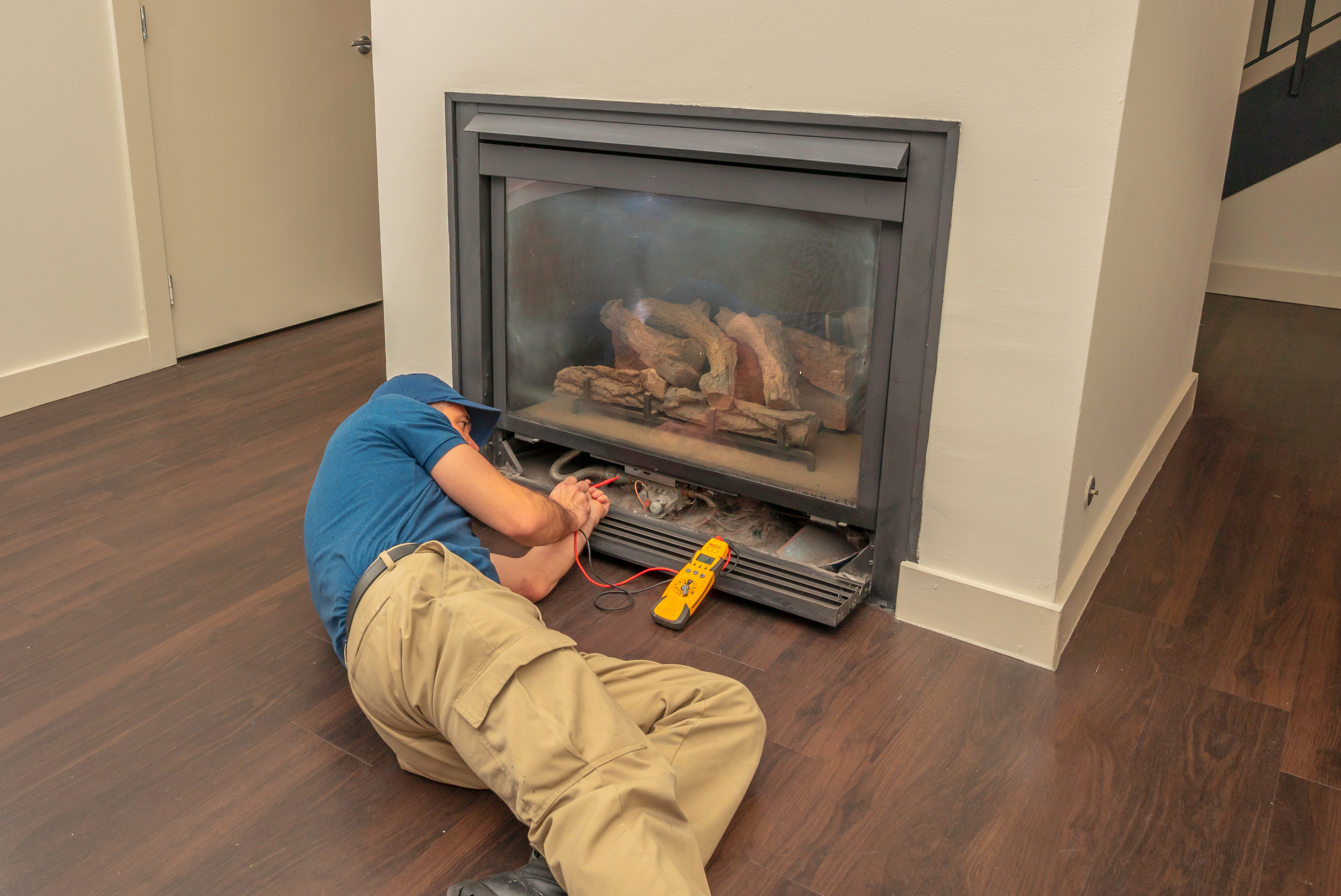The days are getting shorter and the temperatures are getting colder, which means one thing: Winter is coming. To help you prepare for the snowy, chilly months ahead, it’s important to get your gas fireplace a tune-up. Maintaining a gas fireplace is important as it keeps it in good working order and avoids any safety hazards apart from it giving such cozy and warm throughout the winter. However, it can be difficult to find out if there is a problem with your unit, especially when you haven’t had it fixed yet.
In this article, we will walk you through all the possible things that are critical to test when conducting gas fireplace maintenance, warning signs of why you need to call a technician, and how to choose the right one.
Critical Tests in Gas Fireplace Maintenance

If you want your gas fireplace to keep in good condition, then you need to have proper maintenance practices. It is not just about cleaning the glass or chimney. There are some important things that you need to do as well.
Conduct a Gas Line Test
A gas line test is a good practice when maintaining a gas fireplace. This test checks for leaks in the gas lines that supply gas to the fireplace. If a leak is found, it can be repaired before it causes any damage. A gas line test can also help to identify any other problems with the gas lines, such as corrosion or blockages. Conducting a gas line test on a regular basis is the best way to ensure that your gas fireplace is safe and efficient.
Pilot Assembly Cleaning and Inspection
This practice involves removing the pilot assembly from the fireplace and cleaning it with a soft brush or cloth. You should also inspect the pilot assembly for signs of wear or damage. If you notice any problems, it’s best to have the assembly replaced by a qualified technician.
Check Thermocouple Millivolts
The thermocouple is a safety device that monitors the flame of your fireplace and turns off the gas if it goes out. By checking the millivolts, you can make sure that the thermocouple is working properly. If the readings are low, it may be time to replace the thermocouple.
Evaluate Ignition Control Sequences
Ignition control sequences are important when maintaining a gas fireplace. By understanding the proper sequence, you can ensure that your fireplace will function properly and safely.
There are three main components to an ignition control sequence:
- The igniter is responsible for initiating the combustion process.
- The pilot light then provides a constant flame that ignites the gas when it is released from the burner.
- Finally, the burner itself produces the heat and light that you see when you turn on your gas fireplace.
By understanding the role of each component, you can ensure that your fireplace will function properly and safely.
Check Operation of Safety Controls
Most gas fireplaces have a variety of safety controls that are designed to prevent accidents. These controls can include automatic shut-off valves, flame sensors, and pilot light ignition systems. It is important to regularly check the operation of these safety controls to ensure that they are working properly.
Common Warning Signs to Consider That You Need a Technician
While a gas fireplace can be a cozy and inviting addition to any home, it’s important to be aware of the warning signs that indicate you may need a technician to help maintain your fireplace. After all, you need to know the current condition and situation, or else you’ll be left out in the cold during the winter.
Soot Build-up
One problem that can occur is soot build-up. This is usually caused by a problem with the burner or the venting system. If the burner is not adjusted properly, it can create too much heat, which will cause the logs to produce soot. If the venting system is blocked or restricted, it can also cause soot build-up.
Hissing Sounds
If your fireplace starts making hissing sounds, it’s a sign that you have a gas leak. Although it may not seem like a big deal, a gas leak can be extremely dangerous. If the leak is small, you may be able to repair it yourself.
First, turn off the gas supply to your fireplace. Then, check all of the connections to make sure they’re tight. If the leak is coming from a pipe, you may need to replace the sealant. If the leak is coming from the regulator, you’ll need to call a professional to have it replaced.
Pilot Issues
If the pilot light won’t stay lit it could indicate faulty wiring. If the wire that leads from the igniter to the gas valve is loose, it can cause the pilot light to go out. Another possibility is that the igniter itself is not working properly.
Knowing these common warning signs you should be able to apply them at your home, in either case, it’s best to call a professional to take a look at your fireplace and make the necessary repairs. With a little care and maintenance, your gas fireplace should provide you with many years of trouble-free use.
The Experts at Northco Fire, Colorado
As a wrap-up, it’s important to consult the experts who have years of experience packed with professionalism as they are the ones who specialize in this field. And with the right company such as Northco Fire, you can enjoy the winter without having to break the bank with an assured cozy and warm fireplace to lean on throughout the winter.
